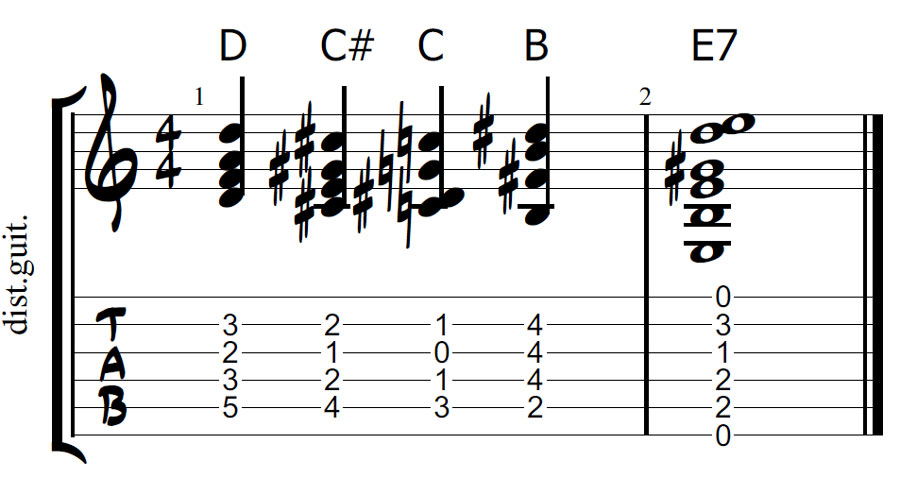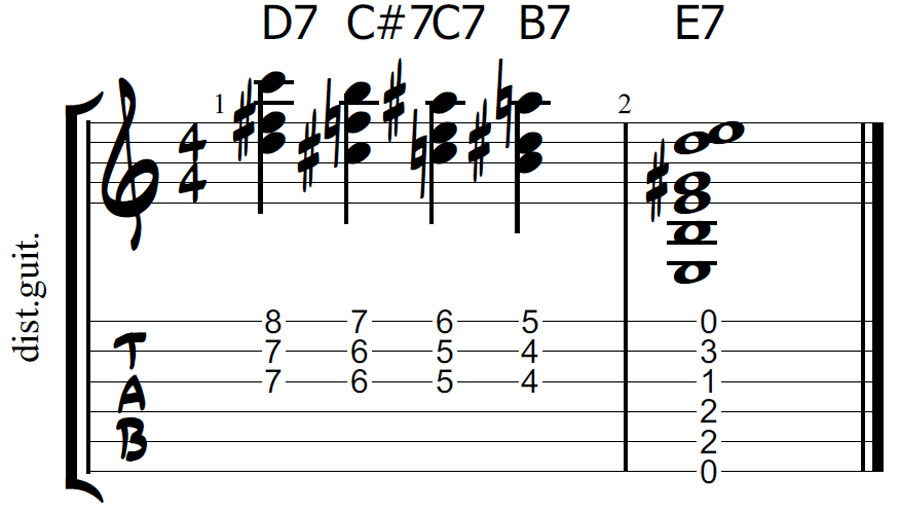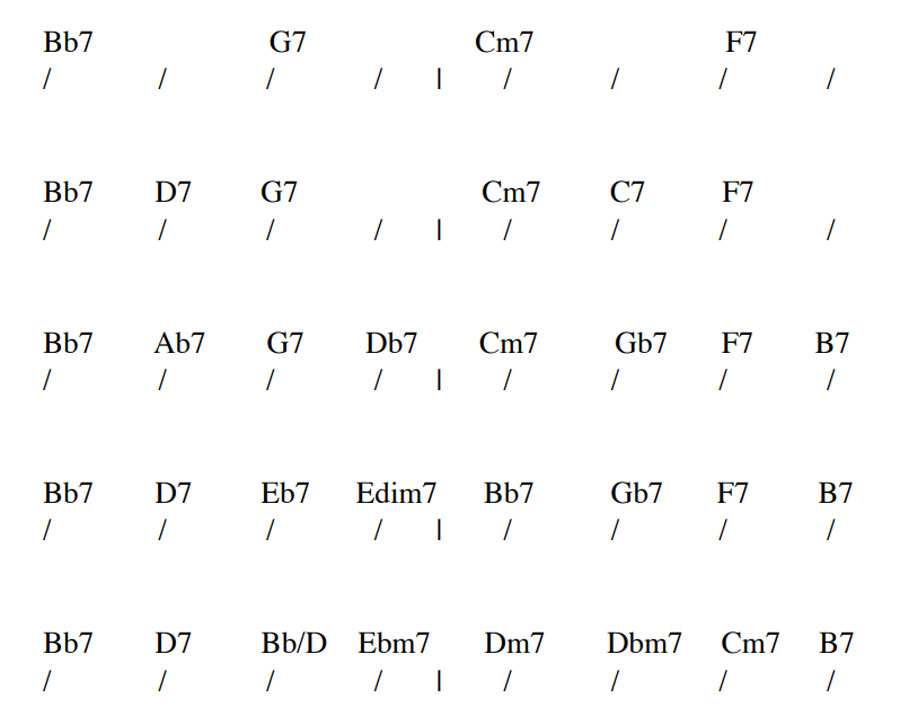Blues Turnarounds
How To Play Blues Turnarounds On Guitar
In this post we're going to learn about a crucial concept that can not miss in any blues song, the Turnaround.
The term turnaround refers to a musical figure or phrase played in the last two bars of a blues chord progression, setting up or “turning around” to repeat the form from the beginning.
Whether the blues form is based on a pattern of 8-bars, 12-bars (the most common form), 16-bars, or 24-bars, or other variations, each needs to start over, and it’s the turnaround that gets that job done.
Turnarounds are often heard as intros and endings as well and the classic blues turnaround is based on a phrase that descends chromatically.
Blues Turnaround In E
The most common turnaround figure of a 12-bar blues in E in quarter notes for example would be D–C#–C– B (minor 7th to the fifth of an E7 chord) typically starting on beat two of measure 11 (either a quarter-note rest or a quarter-note E normally occurs on beat one of that measure).

The register of this descending line allows for the turnaround to occur in the top voice (played on the B string) or in the bass line (played on the fifth string or a combination of the fourth and fifth string).
The push and pull of the chromatic passing tones in each provide the tension and release that prompts a return to the beginning of the form.
Blues Turnaround Variations
The first variations of this turnaround use double stops.
Adding the high E string together with each note of the turnaround moving down in half-steps on the B string adds to the interest and tension while hinting at a fuller harmony on each half-step.

A further variation harmonizes the line in three-note dominant 7th chords.
The simplest and most common inversion choice would be to use an open D7 shape and move down chromatically.
For a 12-bar blues in E turnaround, after you play the E chord in bar 11, take an open three-note D7 shape, move it up two frets to form an E7 chord, and then move it down in half steps until you come back to the E chord in the last measure.
Where To Use Blues Turnarounds
There is a chord structure to turnarounds and beat placement relative to changing chords must be observed.
Most turnarounds consist of two chords, the I or I7 chord, and the V or V7 chords.
In a 12-bar blues form the V or V7 most often begins in bar 12 and it can do so on any beat of that bar.
In most blues progressions the I chord begins on beat 1 of bar 11 and the note choices to start the turnaround must begin by playing a note from the I chord (ie. root, 3rd, 5th, 7th, 9th, etc) on that beat.
The V chord can occur on any beat after that but typically occurs in bar 12 on either beat 1 or beat 3.
The same rule applies then to the V chord and a note from that chord must be played on either beat 1 or beat 3.
Adhering to and respecting this structure allows for the following general possibilities when composing turnaround lines.
- 1. Notes can descend or ascend together,
- 2. Notes can expand or contract the interval over a static root note
- 3. Notes can move in contrary motion to each other
- 4. A root note can be held with another note moving against it
- 5. The ending note or notes must be from the I or V chord when those chords are to sound
- 6. Ending notes can be the same note
Once these possibilities invite the addition of a third, or fourth note the options for interesting and innovative turnarounds can be expressed in chord form.
The options at this point begin a journey toward jazz blues by taking the points above and further incorporating basic principles of chord substitution and borrowing.
Blues Turnaround Example In The Key OF Bb
Some turnaround options in a 12-bar Bb blues could include:

The main ingredient in an effective turnaround is chromaticism.
Even in bare-bones, basic blues progressions an elaborate, elegant turnaround is always welcome.
It lets the listener know that things are about to change.
We’re going back to the beginning to take the ride all over again.
Or we’re just starting the ride in the form of an intro.
Or lastly, and perhaps sadly, that this particular ride has come to an end.
That's all! Subscribe here (free) for future updates.